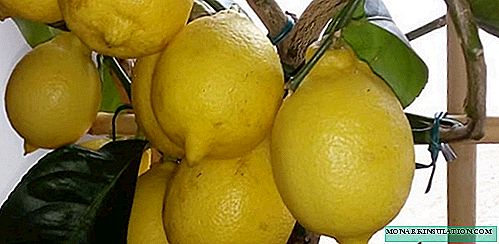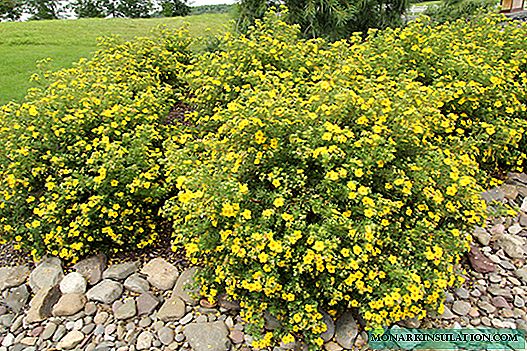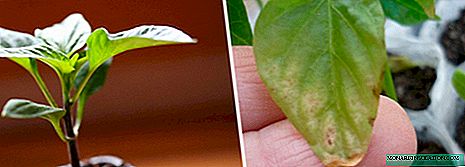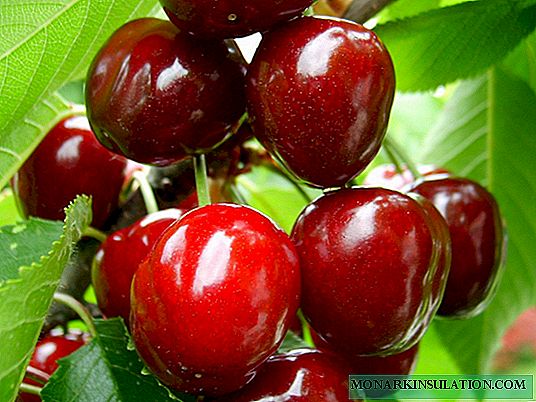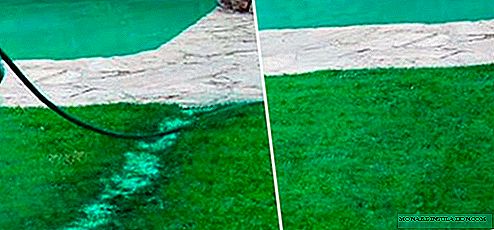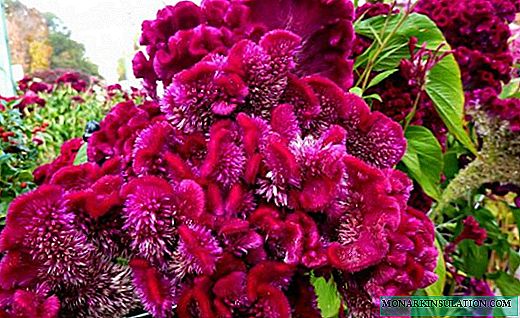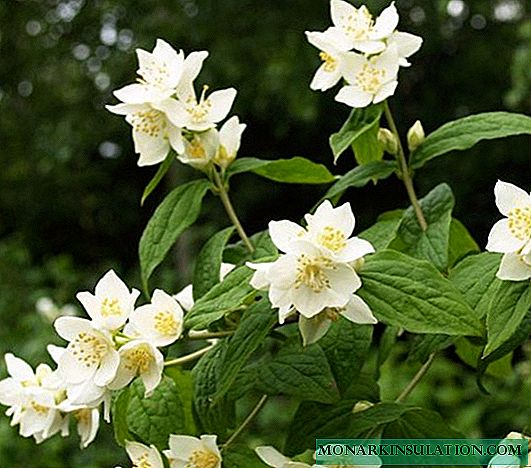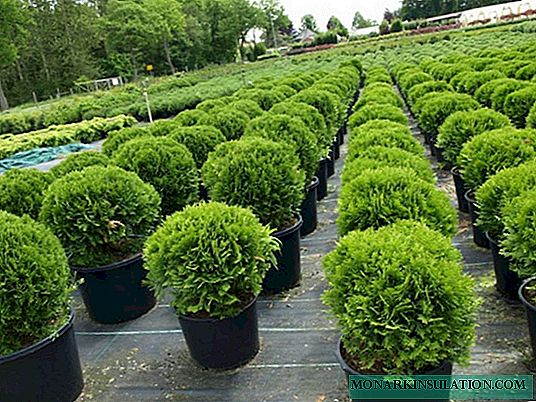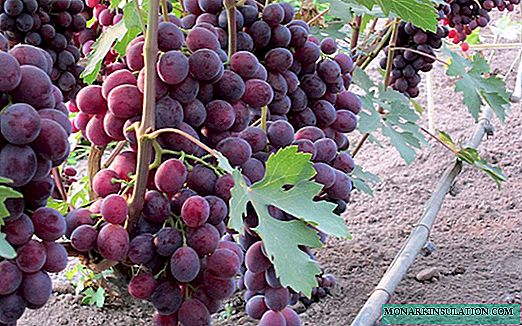
Grapes exist for about 8 thousand years. This healthy and tasty berry deservedly occupies one of the leading places among a wide variety of fruit and berry crops. Therefore, breeders are constantly striving to develop new species. The Zarya Nesveta grape variety appeared not so long ago, but has already managed to gain distribution among winegrowers and amateur gardeners due to its unpretentiousness. Consumers praised its refined and rich taste, as well as an attractive presentation.
Grade history
Dawn Nesveta - a hybrid form of grape amateur selection. It was obtained by crossing varieties of Talisman and Cardinal. The hybrid has inherited the best qualities of its "parents." Variety Talisman gave him large-fruited, resistance to low temperatures and diseases, and Cardinal - large clusters, color and quality of berries. The originator of the form is the famous viticulture breeder E. G. Pavlovsky, who lives in the Rostov region of the Russian Federation. He has been engaged in viticulture since 1985, and also collaborates with scientists at VNIIViV them. ME AND. Potapenko more than 15 years. During this time he tested more than 50 grape varieties.
Description and characteristic
Grapes Zarya Nesveta refers to table varieties. Large clusters of conical shape weighing 0.6-1 kg (some reach two kilograms) have a presentable and elegant look.

Bunches of varieties Zarya Nesvetaya large, can reach two kilograms
Large, from 10 to 15 grams, oval berry of dark red color with a purple hue and a touch of spring looks very attractive.
Pruin - a wax coating that covers the berries with a thin layer. Protects them from mechanical damage, the negative effects of weather conditions, dampness and microorganisms.

The berries of the dawn Zarya Nesveta have an exceptionally attractive presentation
The skin is quite strong, but thin - not felt when consumed. The pulp is elastic, juicy, crunchy and aromatic. The seeds are medium in size, there are 1-2 in the berry. The fruits of this variety are not affected by wasps and are not prone to sunburn.
Berries covered with pruin are well preserved during transportation, but it is believed that they do not hold firmly on the ridges.
The taste is refined, rich, with a muscat aroma and fruit tones. Berries contain 20% sugar, their acidity is 6 g / l. Zarya Nesveta is a table variety, but its use is not limited to fresh consumption. Berries are also used for making wine. The wine is obtained with a characteristic taste and aroma of nutmeg.
Table: brief characteristics of the grape variety Zarya Nesveta
| Indicator | Parameters |
|---|---|
| Common symptoms | |
| The form | Hybrid |
| Direction of use | Table grade |
| Bunch | |
| Weight | 0.6-1 kg |
| The form | Conical |
| Density | Average |
| Brush | |
| Weight | 10-15 grams |
| The form | oval (sometimes round) |
| Color | dark red with a purple tint |
| Taste properties | |
| Character of taste | nutmeg |
| Sugar content | 20% |
| Acidity | 6 g / l |
| Household signs | |
| Ripening period | Super early (100-110 days) |
| Growth power | Tall |
| Flower functionality | Bisexual |
| Productivity | High |
| Frost resistance | -23 ° C |
| Disease immunity | 2.5 points |
The best regions for growing Zarya Nesveta are the southern latitudes: the Caucasus, the Black Sea coast, the Kuban, etc. The early ripening period (100-110 days from the moment of budding on the vines to full ripe berries) makes it possible to grow in more northern regions. Resistance to low temperatures is insufficient for a cold climate (-23 °), bushes must be sheltered for the winter. Berries with a lack of sun and heat can lose part of their taste.
The hybrid is resistant to fungal diseases, immunity is rated at 2.5 points, which is a higher than average indicator on a 5-point scale.
On a five-point grape immunity assessment scale, a lower score indicates a higher resistance. Absolutely disease-resistant varieties have 0 points, very unstable varieties - 5 points.
Excess moisture does not lead to decay or damage by fungal diseases, which makes it possible to grow this variety in a humid climate.
The growth force is high, the bushes are formed powerful and require strong support. Shoots ripen up to 4/5 of the length. You can propagate by cuttings and seedlings. The rooting of the cuttings is good. Seedlings are characterized by a high survival rate. Shoots begin to bear fruit for 2-3 years.
The yield of the hybrid form of the Dawn of Light is plentiful. The proportion of fruitful shoots on the bush reaches 80%. Harvest must be normalized by regulating the load of the vine, it is recommended to leave from six to eight eyes. On each shoot, 3 clusters can ripen. The flower is bisexual, well pollinated. The berries are knotted uniform, peeling is not observed.
Clusters can be cut when the berries reach a ripe maturity, that is, when they gain sweetness and nutmeg appears in their taste. This usually happens in the first half of August. Fully ripened clusters (according to the opinions of wine growers) can be on the bush for a long time, up to one and a half months, without losing consumer qualities. The crunch may disappear, but the berry's density will not change. Sugar levels may rise slightly, as well as a decrease in the astringency of the nutmeg taste.
Video: Zarya Nesveta grape bush with first ripened crop
Growing Features
Hybrid Dawn Nesveta unpretentious and does not require any special techniques of agricultural technology. When standard care requirements are met, even a novice amateur gardener can grow this grape.
Landing
Pits for landing require ordinary, moderately deep and spacious - the recommended size is 80x80x80. They are prepared in advance and pre-seasoned with fertilizers. You can plant both cuttings and seedlings.
Top dressing
After the fruiting begins, the bush must be fertilized with organic and mineral fertilizers and mulch the soil.
Of organic fertilizers, it is best to use humus. Mulching the soil of trunks with rotted sawdust allows you to save moisture. In the future, after rotting the sawdust, microorganisms useful for the plant develop in the mulch.
Of mineral fertilizers, it is recommended to make potash fertilizers in the middle of the growing season. They help to improve the ripening of the vines and fruits. In autumn, it is better to make phosphate fertilizers.
Watering
Regular watering contributes to the development of the bush, increases the yield and improves the taste of berries. Usually, grapes are not watered very often, about once every 15 days. You can not water the bushes during flowering, this leads to shedding of flowers. If the season is too rainy, then the number of waterings is reduced. But even an excessive amount of water will not lead to decay of the plant and the development of fungal processes due to the high moisture resistance of the variety.
Shaping and pruning
The formation of bushes is carried out according to one of the methods intended for vigorous covering grape varieties. The most common option is a rodless multi-arm fan formation. This method contributes to good ventilation and lighting, and also facilitates sheltering of sleeves for the winter. In the autumn, before the onset of winter cold, the bushes are cut off, and the remaining vine is easily folded into bundles that are laid on the ground along a row. For full-grown varieties, it is recommended to form from six to eight sleeves on a vertical trellis. From the head of the bush grow sleeves with fruiting links that are tied to a trellis with a fan. Since a sufficient supply of perennial wood contributes to fruiting, the sleeves for vigorous table varieties should be long. They can reach 100 cm or more.

Diagram of a stemless multi-sleeve fan formation of a bush of tall-growing grapes on a vertical trellis
As with all high-yielding varieties, rationing of the fruiting vine is mandatory. In this hybrid form, up to 6-8 eyes are left on the shoot with a total load on the bush of up to 42 eyes.
Disease
One of the benefits of Dawn is its resistance to disease. With an immunity to fungal diseases of 2.5 points, the hybrid does not need any special protective measures. So that the plant does not hurt and develop well, he, like other grape varieties, needs preventive treatment with fungicides. During the growing season, this is done three times. Sprayed twice before flowering and once after flowering, when the berries grow to the size of a pea.
Pests
Another advantage of the variety is its resistance to wasps. But other pests can cause him serious damage if the appropriate measures are not taken in time. The main pests of the Dawn of Light:
- birds;
- various types of codling moths (including the leaf moth);
- felt tick (or grape itch).
To protect against birds, use a rigid net. The fence should in no case be with small cells or rope, otherwise the birds may become confused and die.
Leafworms and codling moths damage not only berries, they can also destroy leaves, young shoots and inflorescences.

Young caterpillars of the grape leaves are first fed inside the buds, and after their deployment they switch to young leaves
It is necessary to monitor the plant and take timely measures. For the purpose of prevention in the spring, the trunk of the bush before the first branch needs to be cleaned of the old bark and burn it. This destroys the pupae of the leafwort, which winter under the bark. To destroy this type of pest during the season, it is necessary to treat the plants with insecticides intended for this purpose several times.
It is important to remember that any treatment of grapes with toxic chemicals should be carried out at least 30 days before harvesting, otherwise the berry will become unfit for consumption and even dangerous to health.
Occasionally, Zarya Nesveta is attacked by a grape itch or a felt tick (phytoptus). This pest hides in the kidneys in the winter, and in the spring moves to the leaves. Due to itch damage, compacted tubercles form on the leaves, and notches form on the back. There is a violation of photosynthesis.

Dense tubercles form on the upper side of damaged leaves from grape itching (felt mite)
Itching also affects inflorescences, which fall as a result. To prevent and combat grape itching, acaricides are used.
Compliance with these simple recommendations will allow you to grow strong and healthy plants and, as a result, a plentiful harvest.
Reviews
PF Zarya Nesvetaya (Talisman x Cardinal) A very interesting form of grape with an early ripening period in early August. The clusters are large and elegant, with almost no pea. Berries about 10-12 gr., Oval dark red color. This is where the market form will obviously be: hard crunchy flesh with a touch of nutmeg. The clusters are transportable. The form is fruitful, with good ripening of the vine to the very tips. No diseases were observed during standard processing of the entire vineyard. I think that this grape can successfully replace GF Rochefort, which in some areas does not behave identically: pea is present. I would like this form not to disappoint in the future.
Fursa Irina Ivanovna//forum.vinograd.info/showthread.php?t=10198
GF Zarya Nesveta simply conquered me, and not only its appearance, the size of the berry and bunch, but also its excellent taste, the berry ripened in mid-August, the bunch in the picture is 0.994 kg, the other two are 0.3 kg, one of them is still it hangs, which I slowly regale, and there really is something to regale with, despite the fact that the berries have ripened for a long time, however, the nutmeg has remained the same and very pleasant, the pulp is dense, juicy with a crunch, the skin has not become denser, and has remained very thin and absolutely imperceptible, in the berry one or two seeds, the berry is large , 10-12 gr, the color from dark burgundy turned into purple with a light spring, some berries in the bunch began to fade, but hold on tight, the bunch is beautiful conical, did not crack, the vine is already half ripe, growth, like last year, was average, to form the shoulder with two sleeves to the end, with four treatments was not sick.
Vlad grapeA cluster of hybrid forms dawning in the middle of August, dawning Nesveta weighing 0.994 kg
//vinforum.ru/index.php?topic=6.0
G / d Dawn Unlighted. The first fruiting. Bush the second year. Tabletop grafting on a seedling of Vierul stockstock 3. Two clusters were left. The weight of the clusters is from 1.5 to 1.9 kg. Berries weighing about 10 grams, the pulp is dense, the taste is harmonious with a nutmeg aroma. Ripening in 2013 10 days later than g / f Super Extra. Resistance to fungal diseases is good. Sincerely, Gennady Popov.
Gennady Petrovich//forum.vinograd.info/showthread.php?t=10198&page=2
I want to note from the new products Zarya Nesveta, an excellent nutmeg, refreshing, memorable, does not go away and becomes even sweeter when over-ripening. There is a certain astringency in the taste, but it does not spoil it, but gives an even more refined aftertaste, resembling a good wine
Valeravine//forum.vinograd.info/showthread.php?t=10198
Zarya Nesvetaya is interesting in that when it is removable, it is pale pink, hence the "dawn", but then it can hang on bushes for a very long time, without losing consumer qualities, but gaining color. But the photos are two clusters photographed with a difference of 1.5 months, while both are ripe.
Evgeny PolyaninBunches photographed with a difference of 1.5 months, with both ripe
//vinforum.ru/index.php?topic=6.0
64% of registered users of the site //forum.vinograd.info/, popular among winegrowers, rated Zarya Nesvetu as a reference or a very good variety. Another 16% gave him an assessment as a good variety, the disadvantages of which can be easily dealt with through the use of appropriate agricultural practices.
Zarya Nesveta is a wonderful hybrid form of table grapes that does not require much effort when growing. Not only an experienced grower, but also a beginner grower can get an excellent harvest. The table will be decorated with spectacular dark red clusters. These amazingly beautiful, large and sweet berries will not leave anyone indifferent.



